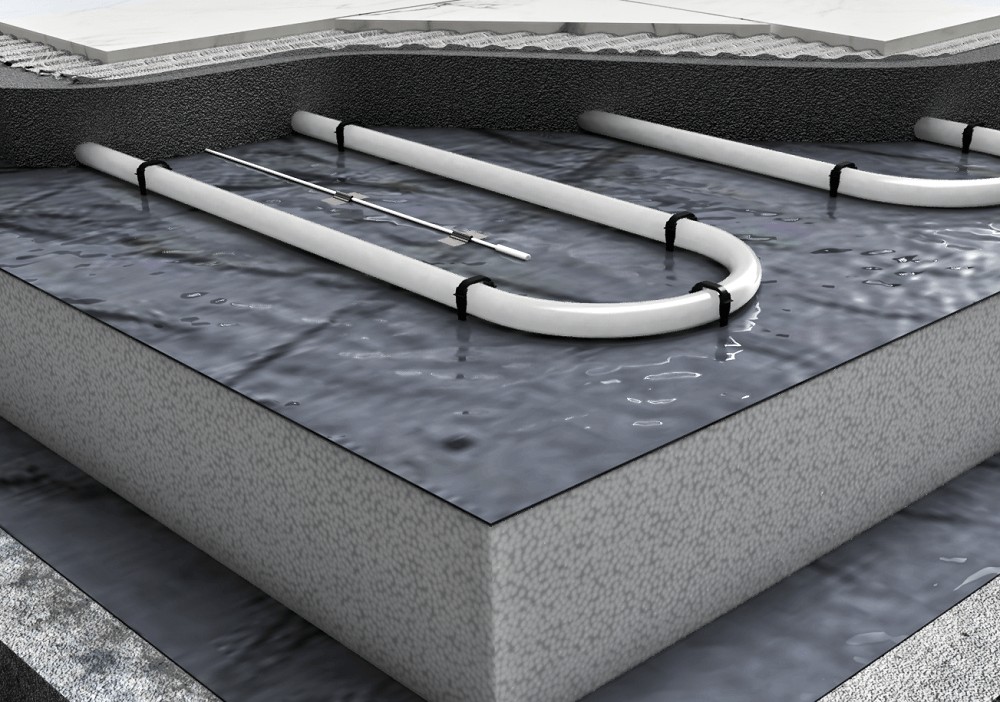The Science of Radiant Heat: Understanding How Underfloor Heating Works

Underfloor heating has emerged as a popular and efficient heating solution, providing a cosy and comfortable living environment. At the heart of this innovative system lies the science of radiant heat. Unlike traditional heating methods that rely on convection, underfloor heating uses radiant heat to warm spaces from the ground up. In this article, we will delve into the science behind radiant heat and explore how underfloor heating works. Understanding the principles of radiant heat transfer will shed light on why this system is gaining traction in modern homes, offering improved comfort, energy efficiency, and design flexibility.
The Basics of Radiant Heat
Radiant heat is a form of energy transfer that does not rely on the circulation of air. Instead, it moves in waves directly from the heat source to cooler objects or surfaces. Think of the sun’s warmth reaching the earth or the heat emanating from a fireplace. In underfloor heating systems, the heat is generated by hot water flowing through a network of pipes or electric coils installed beneath the floor. Once activated, the floor surface absorbs the heat and begins to radiate warmth in all directions, warming the surrounding objects and occupants. This efficient method of heat transfer avoids the loss of warmth to the air and ensures that the entire room is enveloped in cosy and even warmth.
Understanding Heat Emission
The heat emission process in underfloor heating is a critical component of its effectiveness. As the heated water or electric coils warm the floor surface, the floor acts as a large, low-temperature radiator. It emits long-wave infrared radiation, which has the unique property of heating objects and surfaces in its path without heating the air in between. This emission of heat from the floor ensures a comfortable and consistent warmth that rises gradually, providing a cosy environment without creating drafts or temperature variations. The floor surface serves as an ideal medium for radiating heat into the room, making underfloor heating an efficient and effective heating method.
Even Heat Distribution
One of the most notable advantages of underfloor heating is its ability to distribute heat evenly across the entire floor surface. As the radiant heat emanates from the floor, it naturally rises to warm the surrounding objects and occupants. This uniform distribution eliminates the cold spots commonly found in spaces with traditional heating systems, where heated air rises and cool air falls, leading to temperature imbalances. With underfloor heating, every corner of the room receives the same level of warmth, creating a comfortable and inviting environment throughout. Even heat distribution is particularly beneficial in open-plan living areas, where maintaining a consistent temperature can be challenging with conventional heating methods.
Zoning and Temperature Control
Underfloor heating systems offer the flexibility of zoning, allowing different areas of the home to be heated independently. Each zone has its own thermostat, enabling occupants to customise the temperature according to their preferences and usage patterns. Zoning ensures that rooms not in use receive less heating, optimising energy efficiency and reducing operating costs. Additionally, underfloor heating’s radiant heat provides a more responsive heating experience. Unlike forced-air systems, which may take time to warm up a room, underfloor heating reaches the desired temperature relatively quickly. This responsiveness, combined with zoning capabilities, allows for precise and efficient temperature control, ensuring comfort and convenience for homeowners.
Reduced Energy Consumption
Radiant heat’s efficiency leads to reduced energy consumption in underfloor heating systems. The heat transfer process avoids energy losses associated with heating the air in the room, as is common in convection-based heating. Underfloor heating operates at lower water temperatures compared to traditional radiators, requiring less energy to maintain comfortable indoor temperatures. When coupled with programmable thermostats and smart home integration, homeowners can further optimise their energy usage, heating rooms only when needed. The reduced energy consumption not only contributes to lower utility bills but also aligns with sustainable living principles, making underfloor heating an eco-friendly heating solution.
Compatibility with Various Flooring Materials
Underfloor heating’s radiant heat is compatible with a wide range of flooring materials, offering design flexibility to homeowners and designers. Whether it’s tile, stone, hardwood, laminate, or carpet, underfloor heating can be installed beneath various flooring types without compromising performance. For example, tile and stone flooring are excellent conductors of heat, allowing efficient heat transfer. Hardwood and laminate, with their natural insulating properties, retain warmth longer. Carpet, while providing added comfort, also allows heat to radiate effectively. The compatibility of underfloor heating with diverse flooring materials ensures that homeowners can choose their preferred design aesthetic without sacrificing the system’s heating performance.
Minimal Maintenance and Aesthetics
Underfloor heating requires minimal maintenance compared to traditional heating systems. The absence of visible heating elements, such as radiators or vents, means there are fewer components to clean or maintain. Unlike forced-air systems that may require filter changes or duct cleaning, underfloor heating operates silently and unobtrusively, with minimal attention required. This streamlined maintenance process allows homeowners to focus on enjoying the comfort and aesthetics of their living space. The hidden nature of underfloor heating complements interior design choices, as it doesn’t impact furniture placement or room aesthetics, providing a seamless and visually appealing heating solution.
Health and Indoor Air Quality Benefits
Radiant heat does not rely on forced air, which can sometimes carry dust, allergens, and airborne particles throughout the home. As a result, underfloor heating contributes to improved indoor air quality, making it an ideal choice for individuals with respiratory conditions or allergies. By eliminating the circulation of allergens and dust, underfloor heating creates a cleaner and healthier living environment. Furthermore, the even heat distribution minimises temperature fluctuations that may trigger respiratory discomfort, ensuring a more stable and comfortable indoor atmosphere.
Conclusion
The science of radiant heat lies at the core of underfloor heating, revolutionising the way we experience comfort and energy efficiency in our homes. As heat radiates from the floor surface, it creates a cosy and evenly distributed warmth that envelopes every corner of the room. This efficient heat transfer, combined with design flexibility, zoning capabilities, and reduced energy consumption, makes underfloor heating an attractive and sought-after heating solution for modern homes. Embracing the science behind radiant heat allows homeowners and property developers to capitalise on the benefits of underfloor heating, enjoying a higher level of comfort and a more sustainable living environment.







